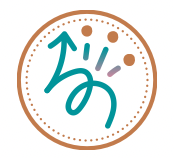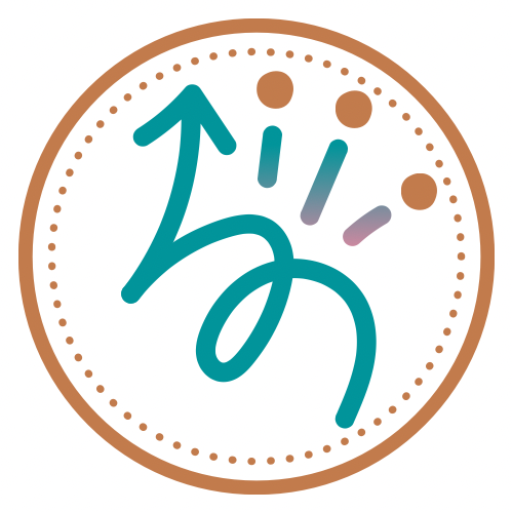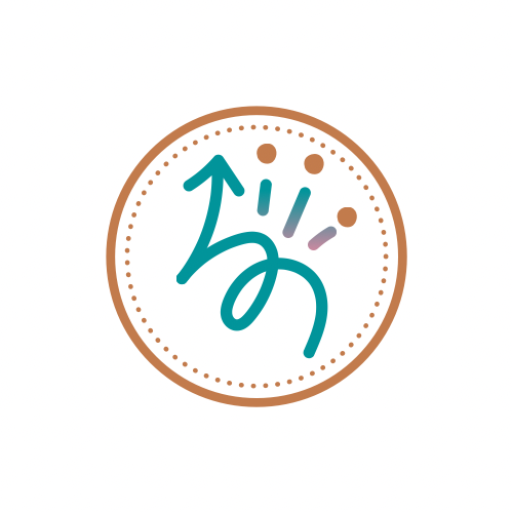DIY Dementia Care Activity Kit
Create your own activity kit for loved ones living with Alzheimer’s or a related dementia. An activity kit can help keep loved ones occupied in a purposeful and engaging activity while keeping agitation and restlessness at bay. Come along with me as we go around our homes collecting items, and in addition create 5 DIY activities for our Dementia care kits.

This content is not intended as a substitute for medical advice, diagnosis, or treatment. Always seek the advice of your physician, therapist, or other medical professional regarding a medical condition or treatment. This content is for informational purposes only. See full disclosure here.
All links in this post are non-affiliate links, and are provided for your convenience.
For A Good Cause
Last night, we went to a wonderful fundraiser to help raise money to protect our local river, our sole drinking source, from being polluted. Our community showed up to support in huge numbers. We listened to some amazing local music, inspiring speakers, hugged familiar faces and introduced ourselves to those we did not know. We bid on auction items all for a good cause. But more than anything, our community came together and celebrated how far we’ve come in protecting our beautiful river. It was a great night.
It amazes me what a small group of volunteers can do to overcome such big challenges.

Today’s DIY Dementia Care Activity Kit
For today’s project, we will be putting together a DIY dementia care activity kit. We will be collecting familiar activities for our loved ones around the home and our communities as well as create a few activities of our own as well.
Dementia care activity kits are a great therapeutic way to keep those living with dementia occupied in a purposeful and engaging way. Plus, these DIY activity kits are a great way to add fine motor and sensory experiences to the day as well. Having a kit readily available for use, can help keep agitation and frustration at bay by participating in various purposeful activities during the day.
Keep in mind when building your own dementia care activity kit, base your kit on your loved one’s needs and stage of dementia. Not all activities will be appropriate for everyone. Contact your personal occupational therapist or speech-language pathologist to find out what types of activities will be a good fit for your loved one.
Signs And Symptoms Of Dementia
As stated by the Center of Disease Control and Prevention (CDC), “dementia is not a specific disease but rather a general term for the impaired ability to remember, think, or make decisions that interfere with everyday life activities.” Whilst, Alzheimer’s is a specific disease and is the most common type of dementia.
Here is a list of common signs of dementia. Often changes are seen in the areas of visual perceptual, memory and communication differences, and changes in attention during activities.
- Get lost in familiar places
- Use unusual words for known items
- Forget names of friends and family members
- Changes in assistance needs to complete tasks
- Forget recently learned information
- Changes in planning and problem solving abilities
- Confusion with time or place
- Trouble with reading and comprehension
- Changes in balance
- Misplaces items frequently
The CDC and Alzheimer’s.org are both great resources to find out more information regarding dementia. If you have concerns regarding dementia, contact your physician.
Get Your Dementia Care Home Safety Checklist HERE!!
We'll send it directly to your inbox. Thanks for subscribing to the DIY newsletter.
You can unsubscribe at any time.
Thank you!
Happy Inbox! Your Home Safety Checklist is on its way!!!

What Is An Activity Kit For Dementia Care?
A dementia care activity kit, also known as a busy box, is a box of items with activities for your loved one to participate in living with dementia. Dementia care activity kits should include familiar activities that are easily set up and ready to go when needed. This kit can either include a handful of tasks to complete, or it can be a larger box with numerous items.
The items in the activity box are not intended to be completed all in one sitting. These items should be completed one at a time at an as needed basis when your loved one is in need of an engaging, purposeful activity.
Oftentimes, it is best for the caregiver to pick an activity and set it up instead of giving the entire activity kit to your loved one which may become overwhelming for some. Make sure to check out the “Dementia Care Activity Kit Set Up and Helpful Strategies” section below.
Looking for more games and activities for your loved one? Check out some of these games that are specifically designed for those with memory loss from the Alzheimer’s Store.
What Should Be In The Activity Box?
Since all of our loved ones have had different interests and hobbies over the years, it’s important to take preferences into consideration when making an activity kit. Before collecting and purchasing any items, first think about what types of hobbies your loved one has had over the years. Did they enjoy taking pictures and making scrapbooks, were they a knitter or quilter, a homemaker or farmer, or did they love to work on cars? Considering a person’s hobbies in their younger years is an important aspect to consider when creating an activity kit.
Caution, choking hazard! Please note, use caution when preparing your activity box due to choking risks. If your loved one chews on non-food items, make sure your kit only contains items that are safe for them to use.





Scaling Interests and Hobbies For The Dementia Care Activity Kit
Since dementia can manifest and present differently for every individual at varying stages, not all of their previous hobbies and interests may be a good fit at this time. However, is there a way you can take a piece of that once loved hobby and incorporate it into the activity kit? Here are some examples:
For The Knitter
If your loved one was a knitter, but no longer knits, consider a yarn activity such as felt yarn art (pictured above) using a medium-sized piece of felt, and decorative yarn. The yarn will stick to the felt holding it in place, but is easily removed as well. No glue needed. Or perhaps today’s lacing activity will also be a good fit.
For The 1000 Piece Puzzler
Instead of purchasing a 1000 piece puzzle which might be quite overwhelming for someone who has dementia, pick a puzzle with fewer pieces. If you are unsure what puzzle to begin with, start out with an easy puzzle with just a handful pieces. If they are successful and can complete it rather quickly without frustration, try another with more pieces. Picking a puzzle that is too difficult can cause frustration and agitation. Take it step by step. Even peg piece puzzles might be a great fit for your loved one.
For The Artist
Consider activities like simple paint by number, collage art, pinch pots or coil pots for the potter using modeling clay or playdough, or even simple adult coloring books. Some adult coloring books, as well as paint by numbers, contain very busy pictures. Choose a coloring book with simple basic pictures. If you cannot find an adult coloring book that is a good fit, consider a children’s coloring book, but base it on interests. For example, for the cat lover, pick a cat themed coloring book.
For The Farmer Or Gardener
Planting windowsill pots is a great activity, but may not be one that can be readily available for the activity kit. Instead, try making the DIY Felt Collage below using a garden theme. Or consider a sorting activity, also mentioned below, sorting various types of seeds, and tree nuts such as acorns.
For The Mechanic And Handyman
Consider adding a “tinkering box” with dull-ended bolts and screws, as well as nuts and washers, brads, rubber bands, etc. Add a piece of cardboard, punch holes in it the approximate size of the bolts and screws to practice placing and tightening the fasteners using their fingers.
Activity Kits and Level Of Difficulty
Overall, if someone is having trouble fully participating in a beloved hobby, try to break that activity down into one that is more accessible and engaging for that person. And again, please use caution when making your activity kit due to choking risks. Make sure all items you place in your activity kit are safe for your loved one.

Dementia Care Activity Kit Ideas
As you are looking around your home or even around town, here are some other ideas to consider in your dementia care activity kit. Choose activities based on your loved ones own needs, interests, stage of dementia, and safety concerns such as choking risks.
- Simple adult coloring book
- Bubbles
- Puzzles
- Easy, familiar card games
- Simple paint by number
- Fidgets
- Stuffed animals, baby dolls to cuddle, or even a weighted stuffed animal
- Easy, large print word find
- Putty, modeling clay, or play dough
- Lacing activities
- Rubik’s Cube
- Etch-a-sketch
- Pop-its
- Accordion tubes
- Various textured fabrics and fidgets
- Mementos and souvenirs such a pictures and keepsakes from vacations or family and friends events
- Items related to favorite hobbies, interests, and jobs during their younger years
Caution, choking hazard! Please note, use caution when preparing your activity box due to choking risks. If your loved one chews on non-food items, maybe sure your kit only contains items that are safe for them to use.
Get Your Dementia Care Home Safety Checklist HERE!!
We'll send it directly to your inbox. Thanks for subscribing to the DIY newsletter.
You can unsubscribe at any time.
Thank you!
Happy Inbox! Your Home Safety Checklist is on its way!!!
Dementia Care Activity Kit Setup and Helpful Strategies
Here are some things to consider:
- Clear a table top or get a TV tray ready at their favorite chair.
- Turn off any distractions such as the TV.
- Consider bathroom breaks if needed prior to starting the activity.
- Position yourself where your loved one can see you, and hear you well.
- Depending on the stage of dementia, it might be best not to ask if they would like to do an activity. Rather help guide them to the activity where it is set up or place it in their hands such as a Rubiks cube.
- Consider participating with your loved one if you are able. Sharing in an experience can increase participation.
- Depending on the stage of dementia, keep your words simple and limited.
- Consider playing their favorite music from their teens and 20’s. Find out more information about music selection in my post How to Make a Reminiscence Music Therapy Stuffed Animal for Dementia Care.
Today’s Project: DIY Dementia Care Activity Kit
Besides collecting items specifically for your loved one based on their interests over the years, consider making a few do-it-yourself items to include in your activity kit as well. All of these DIY activities can be done quickly using items typically found around the home or at your local crafting store. Today’s DIY dementia care activities include:
- A DIY lacing activity
- DIY Button Tic-Tac-Toe
- Do-it–yourself felt collage
- Sorting box
- Stringing beads

DIY Dementia Care Activity Kit #1: Lacing
Materials
- Thin piece(s) of cardboard such as an empty cereal box
- Scissors
- Yarn, shoe lace, or strip of scrap fabric approximately ½-1” wide
- Single hole puncher
Using a thin piece of cardboard (ie: cereal box), cut out any shape you choose approximately at least 4 inches in diameter. Simpler shapes may be easier for those with more advanced stages of Alzheimer’s or related dementia. Cut out several different shapes if you choose. Using a single hole puncher, punch holes around the outside for lacing.
Using yarn, a shoe lace, or even a strip of scrap fabric (approximately ½-1” wide), tie a knot(s) at one end making sure the knot does not slip through the hole. Tie additional knots if needed. If using yarn, make an aglet using tape for easier lacing. Take a short piece of tape and wrap around the opposite end of the piece of yarn leaving the end slightly pointed as seen in the picture.
*Caution. Choking hazard.

DIY Dementia Care Activity Kit #2: Button Tic-Tac-Toe
Materials
- One piece of felt
- Marker
- Ruler
- 9 medium-large sized bright colored buttons (4 of one color, and 5 of a different color)
Cut a 4×4 piece of felt for the tic-tac-toe board. Using a ruler make a tic-tac-toe board making lines 1-1 ½” apart. Get your buttons ready, or other place holder, and play.
*Caution. Choking hazard.

DIY Dementia Care Activity Kit #3: Felt Collage
Materials
- Various colors of felt
- Scissors
- Hot glue (optional)
- Scenery printables (Optional)
Two options:
Option 1: Using different colors, cut out various sizes of shapes such as circles, triangles, squares and rectangles. Trying adding thick squiggly lines. Put these different shapes together on a full sheet of felt to create a collage.
Option 2: Using corresponding felt colors, cut out a scene such as a garden area with these sweet little farm animals and barn, mountain scene, or that of a beach. Cut out trees, flowers, the sun and clouds, triangles for mountains, and strips of blue and yellow for the ocean and sand, etc. Put these together on a full sheet of felt to create a scenery collage.
* I scaled the fruit and vegetables to 60% before printing.
** Caution. Choking hazard.

DIY Dementia Care Activity Kit #4: Sorting
Materials
- Small box either store bought or using a larger cardboard jewelry box or small packaging box with cardboard dividers (see picture)
- Items to sort such as fasteners (dulled ended screws and bolts), buttons, beads, coins, gardening seeds and nuts, etc.
Mix all sorting items together on table top, and sort items into compartments based on type, color, or some other physical feature.
* Caution. Choking hazard.
DIY Dementia Care Activity Kit #5: String Beads
Materials
- Shoe lace, yarn or pipe cleaner
- Beads with wide hole
- Tape if using yarn to make aglet (pointed end to make stringing beads using yarn easier)
Prepare yarn if using by adding an aglet. Wrap a short piece of tape around one end of the piece of yarn creating a pointed end as seen in the picture to make threading beads easier. Tie a knot at the other end of the yarn or shoelace so that the beads do not slip off.
*Caution. Choking hazard.
What kinds of items did you collect for your activity kit? Let us know in the comments below. I’d love to hear your ideas.
Other Projects You Might Like:
Resources
Dementia Resources
- Dementia resource from the Centers For Disease Control And Prevention
- Dementia resources from Alzheimers.org
- Game and activities specifically designed for individuals living with Alzheimer’s or a related dementia from the Alzheimer’s Store.
Free Printables For The Felt Collage
- Sweet little farm animals and barn by the Artsy Craftsy Mom
- Adorable hand-drawn fruits and vegetables by Monday Mandala. I scaled mine to 60% before printing.
- Mountain scene printables
- Beach scene printables






